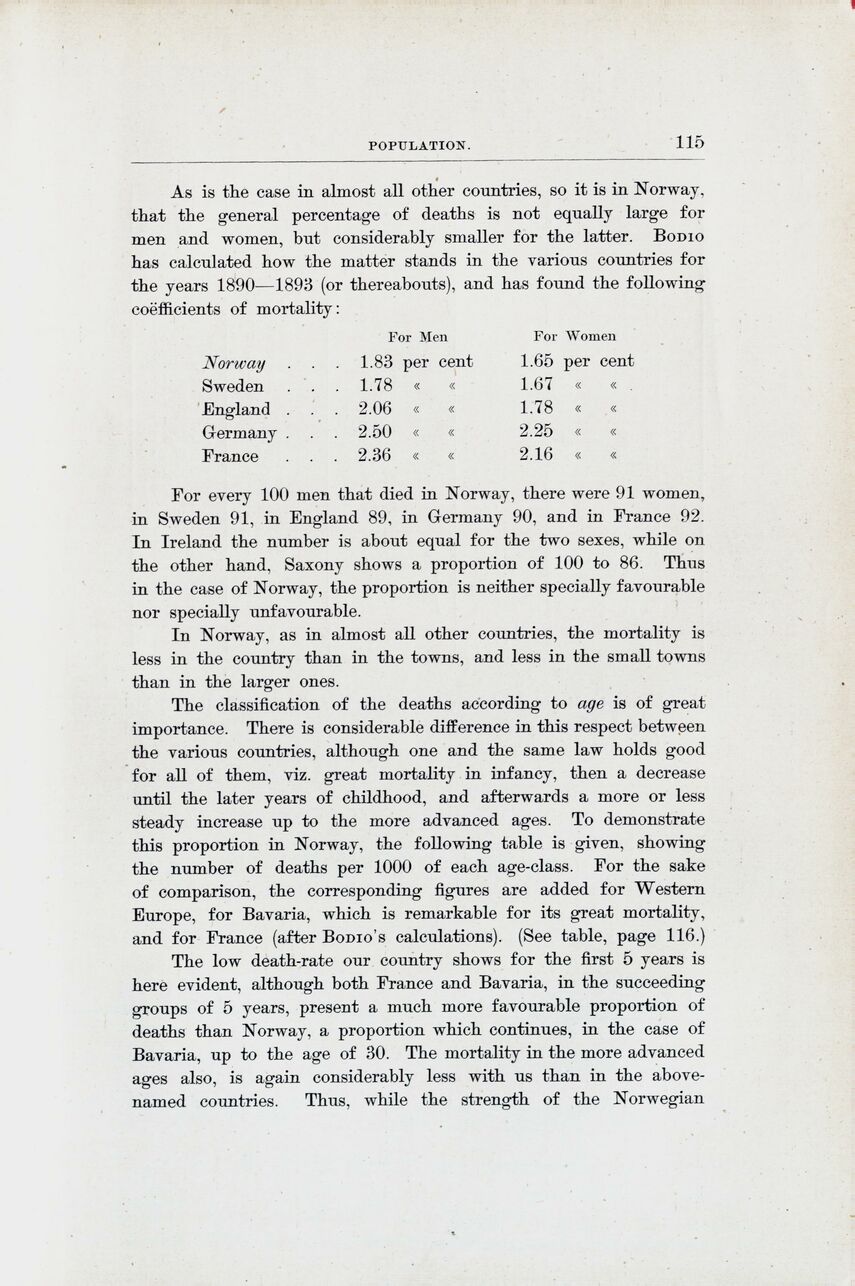
Full resolution (JPEG)
- On this page / på denna sida
- Population, by G. Amnéus

<< prev. page << föreg. sida << >> nästa sida >> next page >>
Below is the raw OCR text
from the above scanned image.
Do you see an error? Proofread the page now!
Här nedan syns maskintolkade texten från faksimilbilden ovan.
Ser du något fel? Korrekturläs sidan nu!
This page has been proofread at least once.
(diff)
(history)
Denna sida har korrekturlästs minst en gång.
(skillnad)
(historik)
As is the ease in almost all other countries, so it is in Norway,
that the general percentage of deaths is not equally large for
men and women, hut considerably smaller for the latter. Bodio
has calculated how the matter stands in the various countries for
the years 1890—1893 (or thereabouts), and has found the following
coefficients of mortality:
| | For Men | For Women |
| Norway . . . | 1.83 | per cent | 1.65 | per cent |
| Sweden . . . | 1.78 | « « | 1.07 | « « |
| England . . , | 2.06 | « « | 1.78 | « « |
| Germany , . . | 2.50 | « « | 2.25 | « « |
| France . . . | 2.36 | « « | 2.16 | « « |
[[** NB ditto-tegnene er plutselig her speilvendt…]]
For every 100 men that died in Norway, there were 91 women,
in Sweden 91, in England 89, in Germany 90, and in France 92.
In Ireland the number is about equal for the two sexes, while on
the other hand. Saxony shows a proportion of 100 to 86. Thus
in the case of Norway, the proportion is neither specially favourable
nor specially unfavourable.
In Norway, as in almost all other countries, the mortality is
less in the country than in the towns, and less in the small towns
than in the larger ones.
The classification of the deaths according to age is of great
importance. There is considerable difference in this respect between
the various countries, although one and the same law holds good
for all of them, viz. great mortality in infancy, then a decrease
until the later years of childhood, and afterwards a more or less
steady increase up to the more advanced ages. To demonstrate
this proportion in Norway, the following table is given, showing
the number of deaths per 1000 of each age-class. For the sake
of comparison, the corresponding figures are added for Western
Europe, for Bavaria, which is remarkable for its great mortality,
and for France (after Bodio’s calculations). (See table, page 116.)
The low death-rate our country shows for the first 5 years is
here evident, although both France and Bavaria, in the succeeding
groups of 5 years, present a much more favourable proportion of
deaths than Norway, a proportion which continues, in the case of
Bavaria, up to the age of 30. The mortality in the more advanced
ages also, is again considerably less with us than in the
above-named [[** sjk bindestrek]] countries. Thus, while the strength of the Norwegian
<< prev. page << föreg. sida << >> nästa sida >> next page >>
Project Runeberg, Sun Dec 10 21:09:24 2023
(aronsson)
(diff)
(history)
(download)
<< Previous
Next >>
https://runeberg.org/norparis/0127.html



